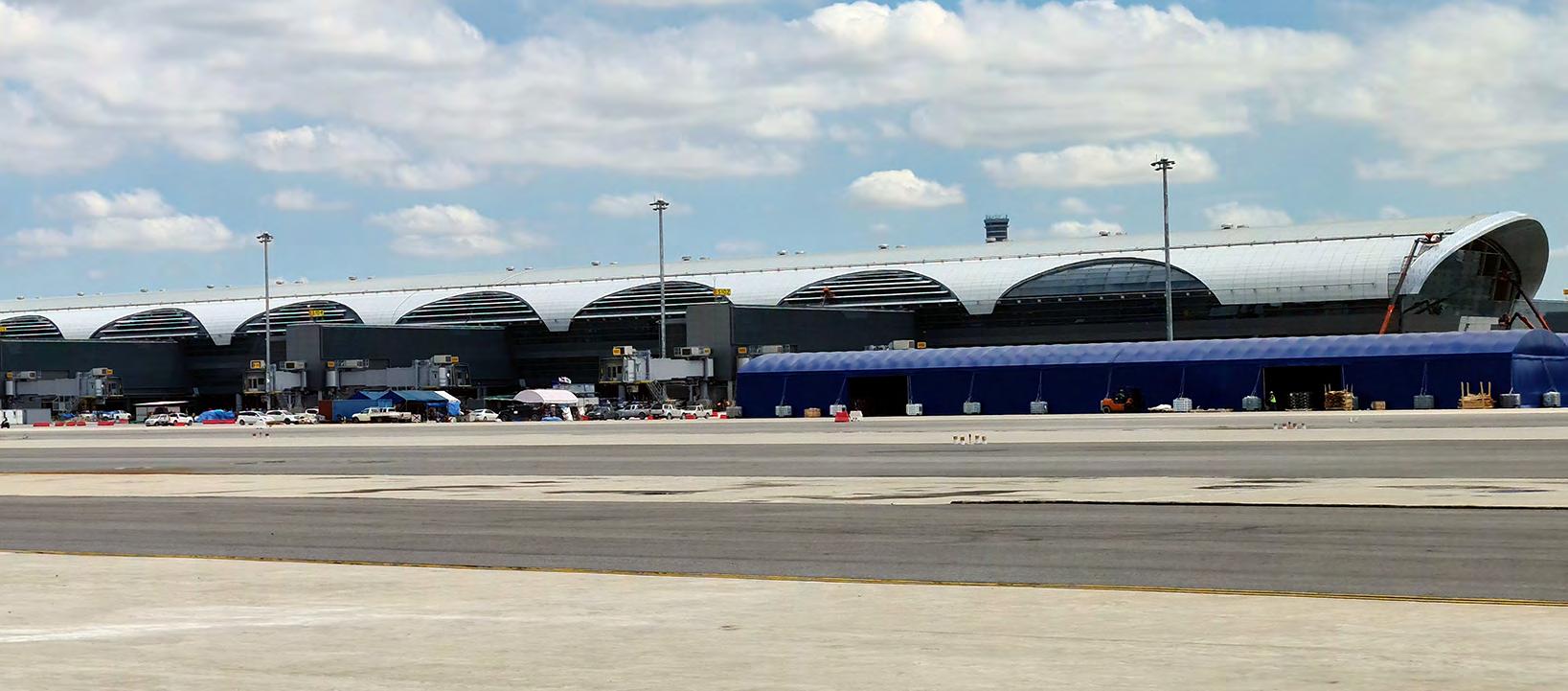
4 minute read
Predicting the future of the Thai aviation industry
Jürgen Supik
The current situation of the aviation business in Thailand is probably not much different to that in most other countries – devasted. It is difficult to imagine the time frame for when it will end and even more difficult to predict when exactly flying/travelling restrictions will be lifted.
In the past, the most lethal viruses disappeared faster than the less lethal viruses, which had more opportunities to infect and adapt to different hosts. After all, a parasite’s goal is not to kill its host, just to profit from it.
As in evolution, where there is a loser, there is also a winner; therefore the aviation industry will not be eradicated. However, the damage is done already and, depending on the length of the worldwide restrictions, more or less bankruptcies, mergers and takeovers are likely to occur. Financially stricken weak companies will not survive in the short term, but the financially stronger companies will profit from the crisis and become even stronger.
In the medium term, Thailand does not have to worry too much. It is in midst of the most densely populated region that has the world’s highest population growth rates. Even if growth rates are halved in the next decade, India and China combined will add another 80 million people to the population of Asia, the equivalent of the total German population. “It is now important for the Government to apply changes to the current PPP projects … to reflect reality and provide conditions that allow the most competitive aviation sector companies to survive at least through the year to come.”
China and India have added 320 million children to the world population in the last 20 years, who will mature to reach their travelling age in the next few years. Adding South Asia to the equation, means there will be an additional 500 million “travel-keen youngsters” in the foreseeable future who can book their travel through their smart phones (source: United Nations World Population Prospects, 2019). At the same time, the mortality rate is going down, older people are retiring earlier and travelling more, and people in Asia-Pacific region are living longer.
This scenario compares to developing and procuring aviation infrastructure and equipment for 10 countries the size of Spain. However, the International Air Transport Association (IATA) has predicted that global passenger traffic will not return to pre-Covid-19 levels until 2024. If there is not a major second wave in countries like China, Thailand and Vietnam, those countries with less Covid-19 cases will bounce back quicker, depending on the opening of international transport bubbles.
In the near-future, infections in Thailand will be easier to control due to a much lower infection rate, more disciplined counter measures and the availability of testing kits, and ultimately the Covid-19 vaccine. As more people (compared to Europe) restrict their travelling needs, they will be keen to travel again once it becomes possible.
Thailand is prepared for the aviation travel resurgence. The new Midfield Satellite, SAT1, at Suvarnabhumi Airport, which was approximately 90 per cent complete at the end of July 2020, will add another 15 million annual passengers (MAP) to the existing capacity of 45 MAP.

Main Terminal on Bang Na Trad side will add up to a final capacity of 120 MAP. In addition, there is Don Muang Airport with 38 MAP and Utapao Airport, which is supposed to add another 12 MAP by 2025.
As the financial power of the middle class, especially among the younger generation, in Asia is not too strong, it is predicted that the low-cost carriers will benefit more in the medium term from this development. Highly-indebted airlines or aviation companies will be downsized or even closed if not provided with Government support.
The gap between low-cost travelling and upper-class travelling will further increase. In the short term, airport designers will have to go through a similar exercise as that in the 1980s when passengers started to use trollies and queuing distances doubled, in adhering to the same service standards.
However, with the “new normal” situation now, there is a chance that distancing may be reversed once the virus disappears for good, similar to the disappearance of infrared cameras to check body temperature once the SARS virus disappeared.
The scenario may be different for upper-class travellers who are willing to pay more for higher service and safety standards. In this case, Automated Guided Vehicles could pick up premium passengers at the curb side or in car parks, thereby adhering to the required social distancing, safety and security protocols, and taking the passengers automatically through all procedures until they arrive at the lounge, duty-free shop or departure gate. account, the success of Thailand’s Aeropolis Plans for future airport expansion do not seem to be so unlikely, as some commentaries have predicted. Anyway, there is no question that in the short term some of the plans and some of the players will change. It is now important for the Government to apply changes to the current PPP projects (e.g., postponement of the maintenance centre construction, the adjustment of implementation plans etc.) to reflect reality and provide conditions that allow the most competitive aviation sector companies to survive at least through the year to come. If this can be achieved, the medium-term future for the Thai aviation industry will be bright.
Dorsch Consult Thailand is currently supervising the construction of the new Midfield Satellite, SAT1, at Suvarnabhumi Airport as part of the SCS consortium. Also, construction supervision of the Suvarnabhumi Airport’s existing main terminal was supervised by a consortium led by Dorsch Consult Asia during 2003 to 2006. For more information see http://www.dorsch.co.th
Contact details: Jürgen Supik Chief Executive Officer Dorsch Consult Asia Co., Ltd. Tel. +66 2 679 8900 supik@dorsch.co.th http://www.dorsch.co.th











